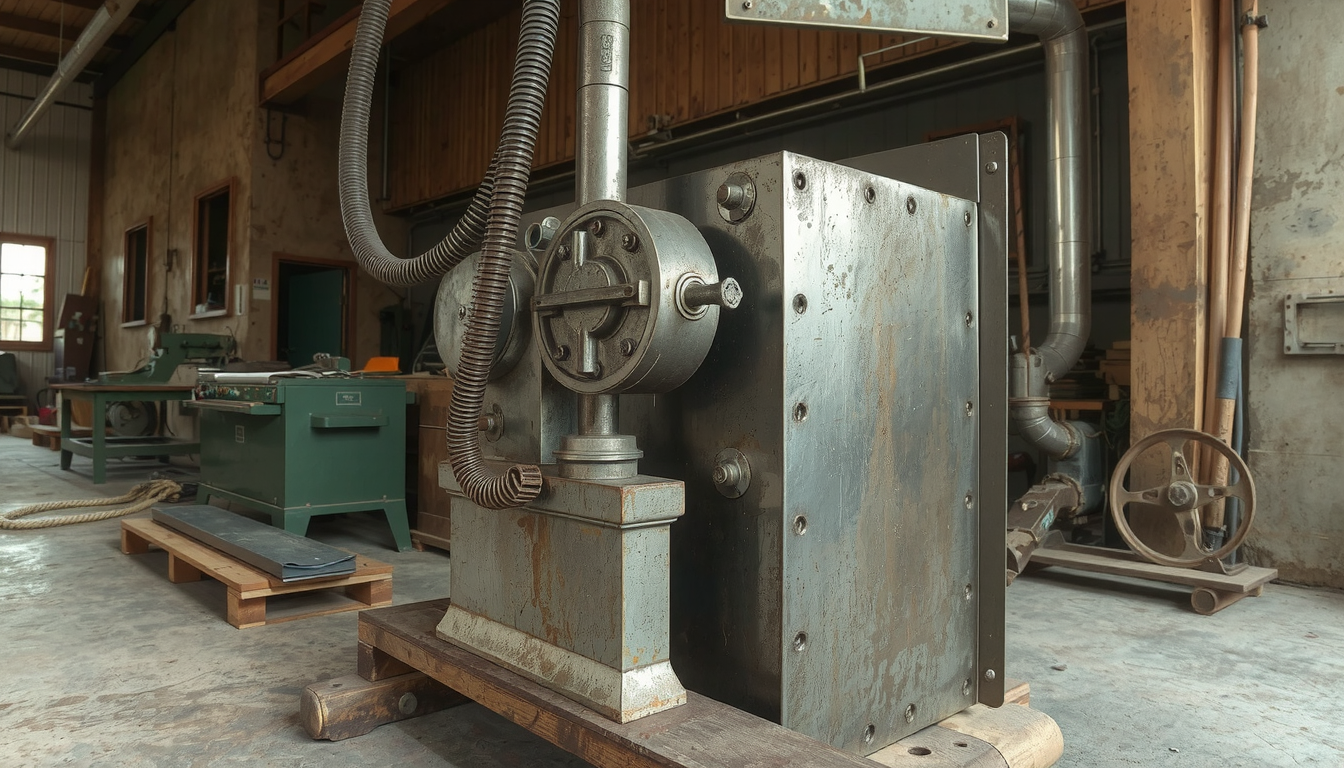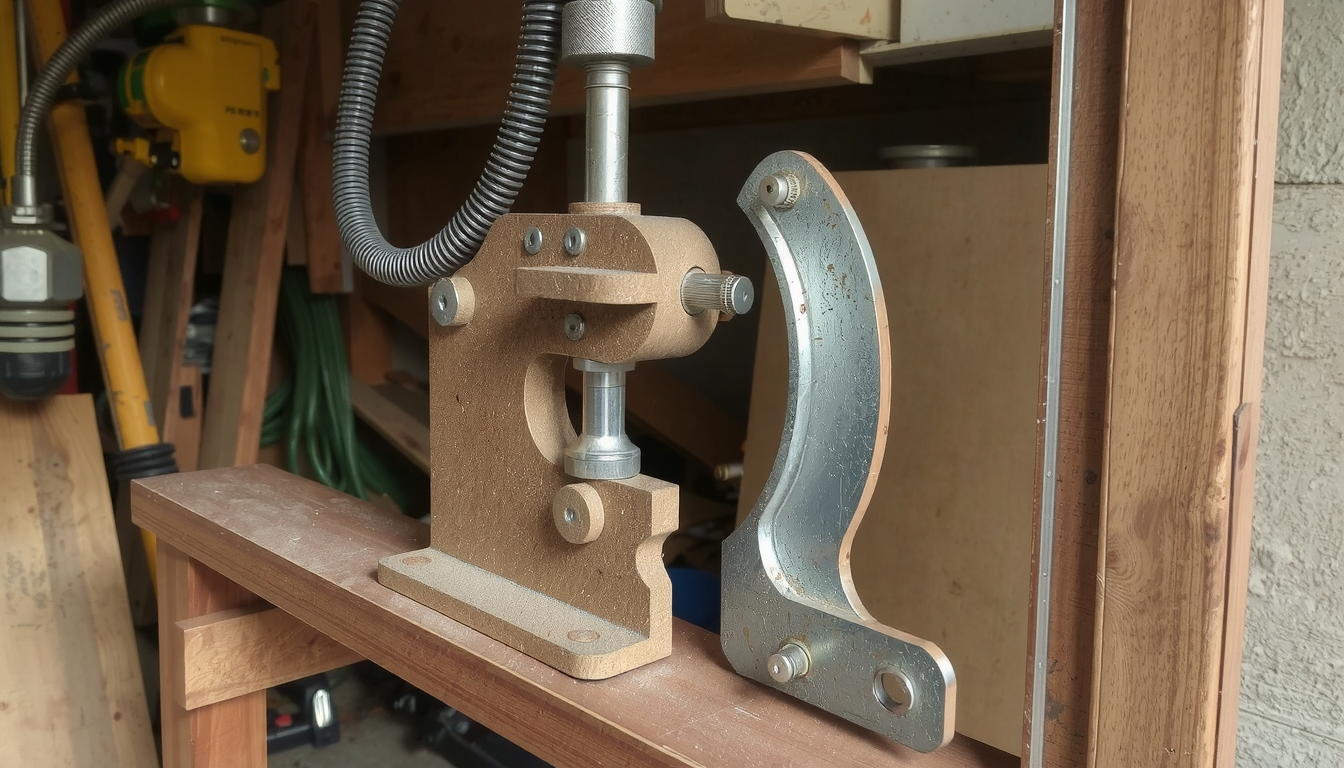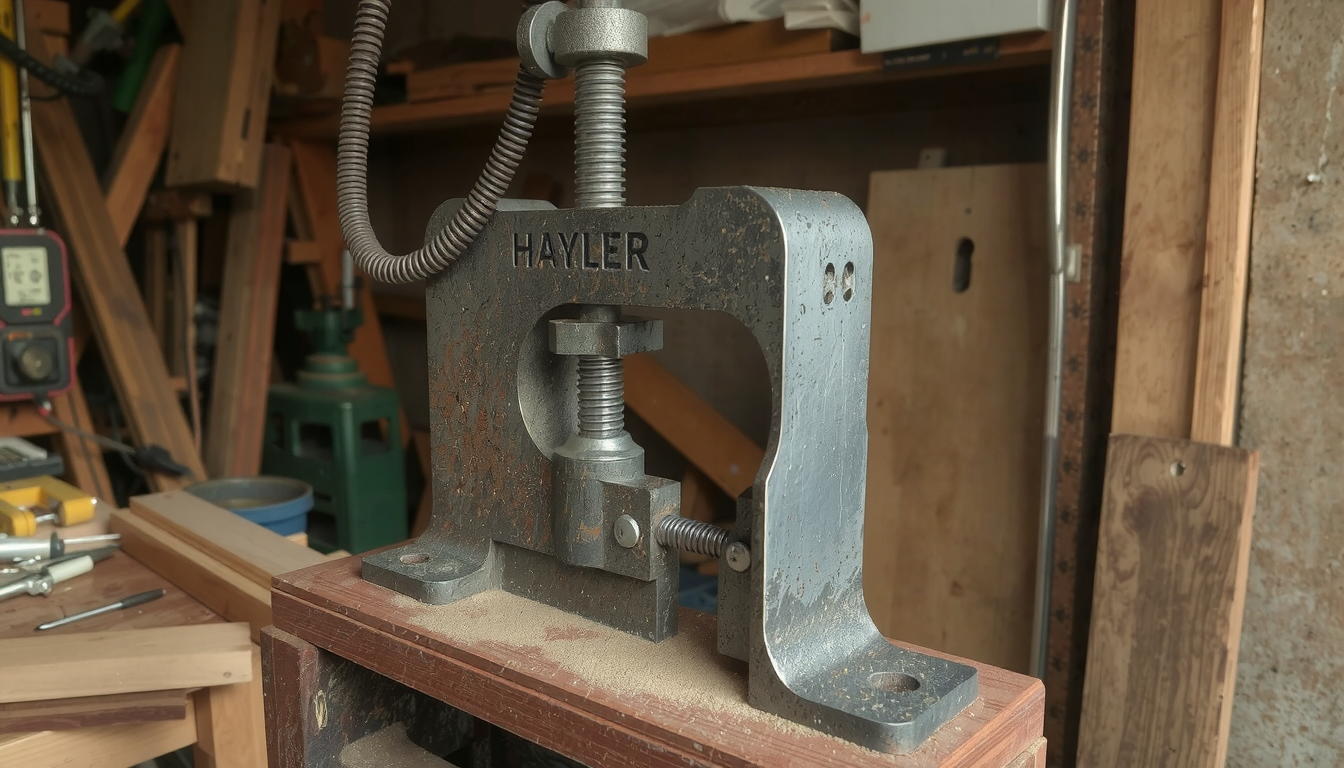The act of making bending breaks in sheet metal is quite hard but imagine how it feels to be able to use a tool you yourself made. With a sheet metal bending brake, every workshop is perfect and making one is very enjoyable.

Is it possible to make a brake for sheet metal bending? Yes, it is possible. This manual will guide you how to. We will include everything you need to know. Your skill level does not matter.
We will examine two options for having one. The first is straightforward, requires no welding, and the second is the stronger and uses welding for heavy work. This guide is the playbook that helps you to build your own tool.
A DIY brake is very useful for most jobs. But there are some tough jobs that need industrial tools. For extremely thick metals or intricate parts, you might consider professional Blechfertigung Dienstleistungen.
Before You Start: Planning Your DIY Bending Brake
Excellent planning is the key to success in your projects. Firstly, you should make some critical choices before you start cutting material. This step is essential to finding the right design for your needs, your skills, and your budget. Good planning saves materials and time. This part of the guide helps you to make the best tool for your workshop.
Key Design Considerations
To start with, you need to contemplate the material you want to bend. The measurement of your bending brake is the most important factor. Are you going to work on small brackets or long panels? The most common sizes for DIY projects are 24 inches or 48 inches long.
If you think about it, there is the question of the metal’s thickness. We use the term “gauge” to refer to this. Just as folding thinner 22-gauge aluminum is a much easier job than thick 16-gauge steel, bending stainless steel requires much more power than mild steel or aluminum of the same thickness. More robust materials will require a brake that is more robust.
Choosing Your Path: Weld vs. No-Weld
Your tools and skills will define your selection. You can make a superb brake with or even without a welder. Every approach has its merits and demerits. The first step in learning how to make a sheet metal bending brake is to find the right way for you.
Here is a simple table to assist you in making your decision.
| Merkmal | No-Weld Design | Welded Design |
|---|---|---|
| Required Skills | Basic cutting, drilling | Welding, grinding, metal work |
| Required Tools | Drill, saw, wrenches | Welder, angle grinder, drill press |
| Kosten | Unter | Can be higher if you need a welder |
| Strength/Durability | Good for light to medium work | Excellent, better for thick metal |
| Build Time | Schneller | Slower, more steps |
Material Choices: Metal vs. Hybrid
You can build your brake from all steel or a mix of wood and steel. An all-steel frame is very strong and lasts long. It is the best option for a heavy-duty welded brake.

A hybrid design is a construction that utilizes a wood base (such as maple or oak) with steel parts that are bent. Wood is cheaper and easier to work with than steel. For a no-weld design, a sturdy wood base works great and costs less.
To Buy Plans or Follow a Guide?
This guide will take you through every step of building your brake from scratch. However, a number of people prefer having printed blueprints. If you are looking for more detailed drawings, then options such as the Woodsmith Sheet Metal Bending Brake Plans are available. They represent a guided path to the construction of a very valuable tool.
Gathering Your Tools and Materials
Having a viable plan, let’s move on to the supplies assembly. A detailed list of materials and tools will help you avoid unnecessary routes to the store. Let’s prepare everything before the actual building stage. This step surely makes it much more straightforward to learn how to make a sheet metal bending brake.
Essential Safety Gear
Safety is our priority number one. Do not start without this gear.
* Safety glasses or goggles
* Heavy-duty gloves
* Hearing protection (for cutting and grinding)
Bill of Materials
Here are the parts you will need. This example is for a 24-inch brake.
For a No-Weld Brake:
* Steel: Three pieces of 2-inch steel angle iron, at least 1/8-inch thick and 24 inches long.
* Base: One piece of strong hardwood (like a 2×6), about 30 inches long.
* Hardware: Two strong door or gate hinges, bolts, nuts, washers, and wood screws.
* Handles: Two pieces of steel pipe or tube, about 18 inches long.
For a Welded Brake (Additions/Changes):
* Weldable hinges instead of screw-on types.
* Flat steel bar for adding strength.
* Square steel tubing for built-in handles.
Required Tool Checklist
The majority of these tools are typical in a workshop.
* Measuring Tape & Marker
* Drill or Drill Press with bits for metal and wood
* Wrench Set or Socket Set
* Angle Grinder with cutting and grinding discs (a metal-cutting chop saw also works well)
* Clamps (C-clamps or F-clamps are very important)
* Welder (for the welded version)
Step-by-Step: How to Make a Sheet Metal Bending Brake (No-Weld Design)

Now let’s get to the fun part: building the brake. We will use a series of clear, simple steps to create the no-weld version. This design is straightforward to construct but still functions very well. This is the essence of learning how to make a sheet metal bending brake for your workshop.
Step 1: Prepare the Base and Bed
The first thing is to cut the wood base to length – about 30 inches. Cut one piece of your angle iron to 24 inches. This will be the fixed bed of the brake. Put the angle iron on the wood base. Drill and countersink holes through the angle iron and into the wood. Use wood screws to secure it tightly. The top edge of this angle iron is your bending edge.
Step 2: Construct the Bending Apron
Take your second piece of 24-inch angle iron. This part will pivot up to bend the metal. We call it the bending apron. Attach this piece to your two strong hinges using bolts and nuts. This apron assembly provides the bending force.
Step 3: The Critical Hinge Alignment
This is the most important step for getting sharp bends. The pivot point of the hinges must line up perfectly with the top bending edge of the fixed bed. A common mistake is to mount the hinges flat against the base. This creates a gap between the apron and the bed. This results in a rounded, weak bend.
To fix this, you must “raise” the hinge. You can do this by placing a spacer under it. Or, you can flip one half of the hinge so the barrel (the round part) sits right at the corner. Perfect alignment here is the secret to a professional-quality homemade brake.
Step 4: Assemble the Clamping Bar
The third piece of angle iron is your clamping bar. This holds the sheet metal down during the bend. Drill oversized holes or slots in this piece. Slotted holes let you move the clamp bar forward or backward. This adjustment is needed to handle different thicknesses of sheet metal.
Step 5: Attach the Clamping Mechanism
Place the clamping bar over the fixed bed. Leave a small gap for the sheet metal. Drill holes all the way through the clamp bar, the gap, and the wood base. Use long bolts that go through all the layers. Use wing nuts or large knobs on top. This lets you easily tighten and loosen the clamp by hand.
Step 6: Add Handles for Leverage
Finally, attach your pipe handles to the bending apron. You can drill holes in the apron and bolt the handles on. These handles give you the leverage needed to bend the metal with little effort. Your no-weld brake is now complete. This no-weld design is inspired by many excellent community projects, like this popular guide on Instructables.
Upgrade Your Build: Assembling a Welded Sheet Metal Brake
If you have a welder and want a stronger tool, a welded brake is a great upgrade. The main benefits are greater strength and stiffness. A welded brake will flex less when bending wide or thick material. This gives you straighter, more consistent results. This approach to how to make a sheet metal bending brake results in a tool that feels and performs like a professional one.
Key Differences from the No-Weld Build
The process is similar, but we use stronger parts and connections.
Hinge Type
Instead of bolt-on door hinges, use heavy-duty weldable hinges. These are often called “bullet” or block hinges. These provide a much stronger and more precise pivot point. You will weld one half to the base and the other to the bending apron.
Reinforcement
A simple angle iron clamp will bow in the middle on wider bends. This leads to a curved bend. To prevent this, weld a piece of flat bar along its spine, “T-style.” This simple addition dramatically increases its strength. It keeps your bends perfectly straight. Do the same for the bending apron.

Handles
For an unbreakable connection, weld the handles directly to the bending apron. You can use square tubing for a comfortable and strong grip. This ensures all your force goes into the bend. Many welded brake builds, such as this detailed Instructables project, show these reinforcement techniques.
Advanced Components
For the ultimate DIY brake, some builders aim for zero “slop” or play in the hinge. This provides the sharpest possible bends. For this level of precision, you can use professional CNC-Drehmaschinen-Dienstleistungen to machine custom hinge pins and bushings that fit together perfectly.
Calibration, First Bends, and Pro-Tips
You have finished building your brake. Now, let’s turn it from a project into a working tool. A few small adjustments and tests will ensure it works perfectly. This step is often overlooked but is vital for getting great results from your new tool.
Initial Calibration and Testing
Before you bend a real part, test your brake with a scrap piece of metal. First, clamp the scrap metal in the brake. Is the clamping pressure even across the whole width? You can check for any bowing in the clamp bar with a straight edge.
Next, lift the bending apron. Does it move smoothly, or does it bind? If it binds, your hinges may be misaligned. Loosen the bolts and adjust as needed. Make small adjustments and test again until everything is perfect. Taking time to calibrate your tool now will save you from frustration later.
Troubleshooting Common Problems
Even the best builds can have small issues. Here are solutions to common problems.
-
Problem: Bends are rounded, not crisp.
- Solution: Your hinge pivot is not aligned with the bending edge. This is the most common problem. Re-check the hinge alignment and adjust it so the center of the pivot is exactly at the sharp corner of the fixed bed.
-
Problem: The metal slips during the bend.
- Solution: Your clamping bar pressure is too low or uneven. Tighten the clamping bolts more. If the bar is bowing in the middle, it needs reinforcement with a welded T-brace as we discussed earlier.
-
Problem: The brake flexes on wide pieces.
- Solution: The angle iron you used may be too thin for the job. Or, the clamp and apron need to be reinforced. Adding a T-brace is the best way to fix this.
Pro-Tips for Perfect Bends
Here are a few tips from the shop floor to help you master your new brake.
* Scribe your bend line on the metal with a sharp tool for accuracy.
* Clamp a test piece first to check your setup.
* Use both hands to operate the handles smoothly and evenly.
* Metal has “spring-back,” meaning it will relax a little after being bent. To get a perfect 90-degree angle, you may need to bend it slightly past 90 degrees.
Frequently Asked Questions (FAQ)
Here are answers to some common questions about how to make a sheet metal bending brake.
What is the best material for a DIY sheet metal brake?
A mix of steel and hardwood is a great start. Use steel angle iron that is at least 1/8-inch thick for the bending parts. This provides good strength. A hardwood base, like oak or maple, is stable, easy to work with, and cheaper than an all-steel frame.
How thick of a sheet metal can a homemade brake bend?
This depends on your brake’s width and how well it is built. A strong 24-inch no-weld brake can usually handle up to 22-gauge mild steel or thicker aluminum. A reinforced, welded brake can often bend 18-gauge or even 16-gauge steel, especially over shorter widths.
Can I make a box and pan brake at home?
Yes, but it is a much harder project. A box and pan brake needs individual, removable fingers on the top clamping bar. Making these fingers requires a lot of cutting and precision work. This often needs a milling machine. For most DIY builders, a straight brake is a better and easier first project.
How do I ensure my bends are perfectly straight?
A strong and evenly pressured clamping bar is the key. If your clamp bar bends or flexes in the middle, your bend line will be curved. The most effective way to ensure straight bends is to reinforce the clamping bar. Usually by welding a T-brace along its back.
Do I need to sharpen the bending edge?
No, you do not want the edge to be “knife-sharp.” A sharp edge could score or even cut the metal. This creates a weak point. You want a crisp, defined corner. The natural edge of a standard piece of angle iron is usually perfect. You can use a file to lightly clean up any burrs for a smoother bend.
You now have the knowledge and the plan. You know how to make a sheet metal bending brake that will be a valuable asset in your workshop. Remember that planning your build based on your skills (weld vs. no-weld) and carefully aligning the hinges are the keys to success.
Now, grab your safety glasses, and let’s get building!
For those inspired to learn more about the world of professional metalworking, exploring resources like Mekalit can provide further insight into industrial techniques and capabilities.

